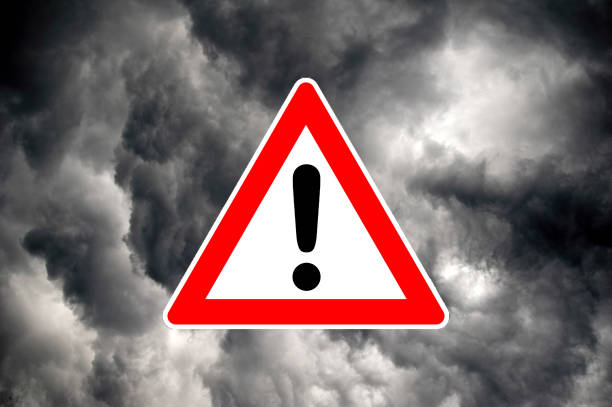Introduction
The South African Weather Service (SAWS) has issued a Yellow Level 2 warning for 6 November 2025 covering multiple provinces. Residents in the affected regions should prepare for severe conditions that include thunderstorms, hail, heavy rain and strong winds. These hazards pose risks to infrastructure, transport routes, informal settlements and farming activities. Staying informed through official channels, securing property in advance, and following municipal guidance will help reduce harm and protect lives during the event.
Storm Alert: Areas of Concern
Seven provinces are highlighted in the advisory: North West, Gauteng, Free State, Mpumalanga Highveld, Limpopo, Northern Cape and parts of KwaZulu-Natal. Each area faces different primary threats — from flash flooding in low-lying urban zones to hail and gusty winds over inland highveld districts. Households and local services should check municipal bulletins for neighbourhood-level guidance and prioritise actions like clearing drains, moving vehicles to higher ground and identifying safe rooms.
Storm Alert: Thunderstorms and Immediate Hazards
Severe convective storms can produce dangerous lightning, sudden downpours and rapid water run-off. Outdoor activities should be suspended while cells are active. People outdoors must seek sturdy shelter immediately, avoid open fields and stay clear of metal objects and isolated trees. Unplugging non-essential electronics can reduce the risk of damage from power surges. Continuous monitoring of official forecasts is key because conditions can change quickly.
Storm Alert: Hail Risk and Mitigation
Hail is expected in parts of the Highveld and northern provinces and can cause significant damage to vehicles, roofs and crops. Where possible, park vehicles under cover and secure garden furniture. Farmers should consider temporary coverings for vulnerable crops and move livestock to protected enclosures. After any hail event, photograph damage for insurance records and avoid areas with shattered glass or debris until safe.
Storm Alert: Heavy Rain and Flood Preparedness
Prolonged or intense rainfall may trigger localized flooding, especially in informal settlements and poorly drained urban areas. Avoid driving through standing water — it can conceal washed-out surfaces and present life-threatening risks. Residents in flood-prone zones should elevate valuables, prepare evacuation plans, and keep emergency contact numbers accessible. Clearing gutters and storm drains ahead of time helps reduce local pooling and flow obstruction.
Storm Alert: Wind Hazards and Protective Steps
Strong gusts can uproot trees, loosen roof sheeting and bring down power lines, creating secondary hazards. Secure loose items such as outdoor furniture, signage and building materials before winds increase. If you see damaged power infrastructure, keep clear and report the problem to the local utility provider. Expect short interruptions to electricity and road access in areas affected by falling trees or debris.
Storm Alert: Infrastructure and Service Impacts
Roads, bridges and power networks are vulnerable during severe weather. Authorities may implement temporary closures and detours to protect public safety, and repair crews will likely be mobilised for rapid response. Businesses and households should prepare for possible service disruptions by stocking essential supplies and planning alternative routes for critical staff. Official channels will provide updates on closures and restoration efforts.
Storm Alert: Support for Vulnerable Communities
Informal settlements and other vulnerable communities face heightened risk due to weaker housing and limited drainage. Local authorities may open emergency shelters or run support operations. Residents in higher-risk housing should move essential items to safer locations and be ready to relocate if directed. Community leaders and neighbours can play an important role in sharing information and assisting those who need help.
Storm Alert: Agricultural and Livestock Guidance
Crop and livestock producers should take proactive steps to protect assets. Hail nets, covered storage and relocating animals to sheltered areas reduce exposure. Protect feed and seed stocks from water damage and review contingency plans for transport and market access. Provincial agricultural services often issue sector-specific advice and may provide information on post-event relief, so keep in touch with those channels.
Storm Alert: Travel and Transport Advice
Travel conditions may deteriorate rapidly: flooded roads, fallen trees and strong winds can cause delays or dangerous driving conditions. Check with transport operators before travelling and avoid unnecessary journeys while storms persist. If travel is unavoidable, allow extra time, drive slowly on wet surfaces and never attempt to cross fast-flowing water. Emergency services will prioritise clearing main corridors, so follow official detours and instructions.
Storm Alert: Recommended Safety Measures
Practical preparations reduce risk: secure loose objects, park vehicles away from trees, assemble an emergency kit (water, torch, batteries, first-aid items and essential medication) and ensure mobile devices are charged. Keep up to date with SAWS bulletins, municipal advisories and local radio. If evacuation is ordered, leave promptly and follow designated routes. Community coordination and early action are the most effective ways to protect lives and property.
Storm Alert: FAQs
Q1: Who issues this warning and where can I get updates?
The South African Weather Service issues official warnings; updates are available on the SAWS website, their social channels and through local municipal communications.
Q2: Which provinces are most at risk on 6 November 2025?
The advisory includes North West, Gauteng, Free State, Mpumalanga Highveld, Limpopo, Northern Cape and parts of KwaZulu-Natal; risk profiles vary by area.
Q3: What immediate actions should households take now?
Secure loose items, check drainage, prepare an emergency kit, shelter vehicles if possible and avoid travel during peak storm periods.
Storm Alert: Conclusion
The severe weather advisory for 6 November 2025 requires preparedness across multiple provinces. Thunderstorms, hail, heavy rain and strong winds can pose serious threats to people, infrastructure and livelihoods. By following official guidance, taking simple protective actions in advance, and supporting vulnerable neighbours, communities can reduce damage and improve resilience. Continue monitoring SAWS and municipal channels for the latest information and cooperate with local response teams if assistance is needed.



